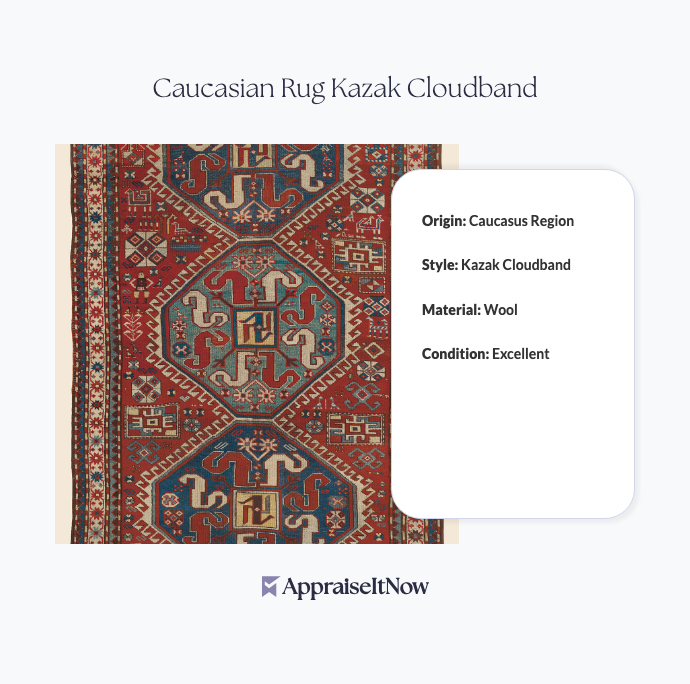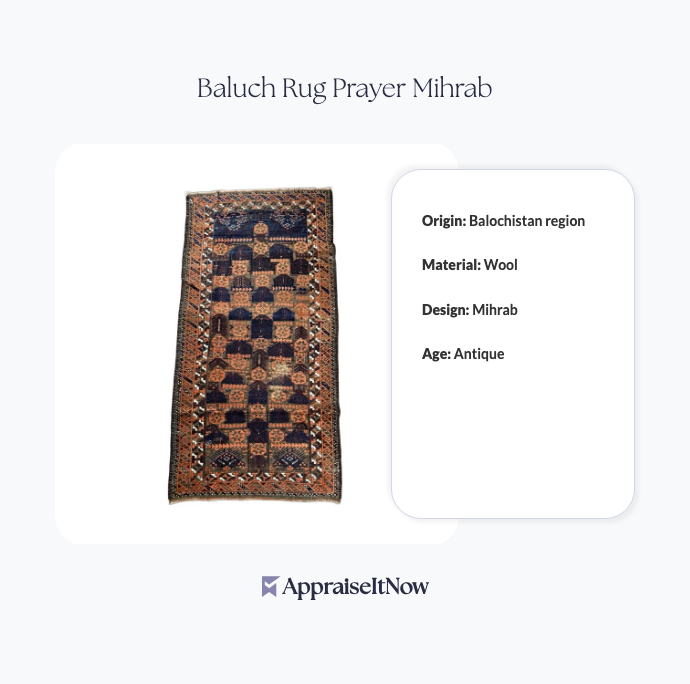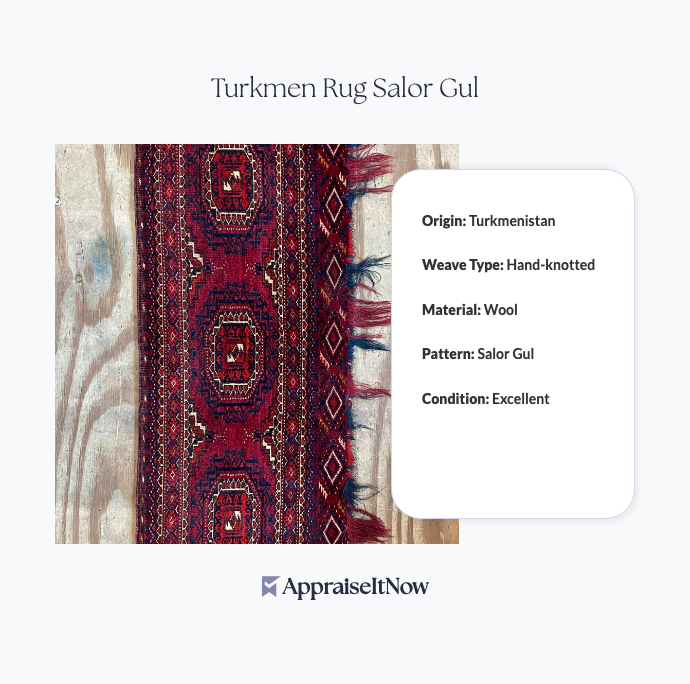<h1>How to Get Your Qum Pure Silk Persian Rug Appraised</h1>
<p>A Qum Pure Silk Persian rug isn't just a floor covering—it's a handcrafted investment that can command between <strong>$45,000 and $65,000</strong> in today's market. Whether you're planning to sell, insure, or simply understand what you own, knowing how to navigate the appraisal process ensures you receive an accurate valuation backed by expert analysis and professional documentation.</p>
<h2>Understanding What Makes Your Qum Rug Valuable</h2>
<p>Your Qum Pure Silk Persian rug represents centuries of weaving tradition refined into a single masterpiece. These rugs originate from Qum, a historic Iranian city renowned for producing some of the world's finest hand-woven textiles. The combination of pure silk fibers, intricate floral patterns, and meticulous craftsmanship creates an item that commands significant attention from collectors and interior design enthusiasts alike.</p>
<p>The value of your rug stems from several interconnected factors. Qum rugs were first introduced in the 16th century and remain produced in limited quantities by master artisans who follow centuries-old techniques. Each piece uses vibrant vegetable-based dyes and features exceptional durability despite the delicate nature of silk materials. Understanding these elements helps you appreciate why your rug falls into the <a href="/types/antique-artwork">antique artwork</a> category rather than ordinary household goods.</p>
<div class="callout tip"><p><strong>Collector's Insight</strong></p>
<p>Pure silk Persian rugs from Qum represent among the most sought-after textile investments globally, with values appreciating steadily as production remains limited and demand grows.</p></div>
<h2>How to Tell If Your Persian Rug Is Silk</h2>
<p>One of the first questions collectors ask when evaluating their Persian rugs concerns material authenticity. So how do you tell if a Persian rug is silk? This distinction matters significantly because silk rugs command substantially higher values than wool alternatives.</p>
<p>Genuine silk exhibits distinctive characteristics you can identify through careful observation. Run your hand across the rug's surface—pure silk feels supple and lustrous, with a smooth texture that reflects light differently than wool. When you examine the rug's pile under proper lighting, silk fibers create a distinctive sheen that wool cannot replicate. If your rug shows this characteristic gleam from multiple angles, you likely have authentic silk construction.</p>
<p>The weight and drape of the rug provide additional clues. Pure silk rugs feel noticeably lighter than comparable wool pieces, yet they possess surprising durability. When you gently lift a corner of your rug, authentic silk will drape with elegant fluidity rather than stiffness. You can also check the fringe and foundation—in authentic Qum silk rugs, these elements should also display silk construction rather than mixed materials.</p>
<p>Are silk Persian rugs expensive? Absolutely. This expense reflects the material's rarity, the labor-intensive production process, and the superior longevity silk provides. A genuine Qum silk rug represents a legitimate investment-grade <a href="/types/personal-property">personal property</a> asset requiring professional verification before significant transactions.</p>
<div class="callout note"><p><strong>Authentication Tip</strong></p>
<p>Professional appraisers use magnification and material testing to definitively confirm silk content, providing documentation essential for insurance and resale purposes.</p></div>
<h2>Identifying a Valuable Persian Rug</h2>
<p>Beyond material composition, several indicators determine whether your Persian rug possesses genuine collector value. How to tell if a Persian rug is valuable requires examining multiple aspects simultaneously, and professional appraisers understand these nuanced distinctions.</p>
<p>The knot density serves as a primary value indicator. Qum rugs typically feature between 200 to 400 knots per square inch, with higher knot counts reflecting superior craftsmanship and commanding proportionally higher prices. Count the knots in a one-inch square of your rug's pile—this simple exercise reveals the production quality your rug represents.</p>
<p>The pattern complexity and color vibrancy matter considerably. Qum rugs showcase intricate floral designs with multiple color variations working in harmonious balance. If your rug displays deep, rich colors that haven't faded to pale tones, this suggests both quality vegetable dyes and proper preservation. The pattern should demonstrate precise symmetry and sophisticated composition rather than simple geometric designs.</p>
<p>Age and condition represent additional value components. How to identify a vintage Persian rug involves examining wear patterns, color consistency, and construction details. Vintage Qum rugs from the mid-20th century typically command premium prices compared to newer production, though condition significantly moderates this appreciation. A well-preserved newer rug often outvalues a damaged antique piece.</p>
<h2>Spotting Counterfeit and Low-Quality Rugs</h2>
<p>Unfortunately, the Persian rug market includes counterfeit and low-quality pieces masquerading as authentic Qum rugs. How to spot a fake Persian rug protects your investment and informs smart appraisal decisions. Professional appraisers incorporate authentication expertise alongside valuation skills, and understanding their methods helps you evaluate potential purchases or verify existing pieces.</p>
<p>Examine the knot structure carefully—authentic Qum rugs display consistent, tight knots throughout, while fakes often show irregular patterns or loose construction. The dyes should appear natural with subtle color variations rather than uniform chemical dyes that indicate mass production. Artificial aging techniques sometimes create false patina on newer rugs, so inspect pile wear patterns carefully—genuine aging shows random wear rather than concentrated fading in specific areas.</p>
<p>Check the rug's underside and fringe construction. Counterfeit pieces often skip authenticity details on hidden areas, cutting corners where quality inspectors might miss the deception. Authentic Qum rugs show the same meticulous craftsmanship on every surface, including the foundation and fringe elements.</p>
<div class="callout tip"><p><strong>Authentication Red Flags</strong></p>
<p>Unusually low prices, mismatched fringe materials, or inconsistent knot patterns suggest either counterfeit production or significant damage affecting value—reasons to seek professional verification before purchase.</p></div>
<h2>Dating Your Persian Rug</h2>
<p>Understanding your rug's age directly impacts its appraisal value. How to date Persian rugs requires examining specific construction and design characteristics that professional appraisers master through years of experience.</p>
<p>Qum rug production increased significantly after the 1970s, with contemporary pieces now comprising the majority of available inventory. Mid-20th century examples (1940s-1960s) typically command premiums of 20-40% compared to recent production, though this assumes equal condition and quality. Distinguishing production eras involves examining dye evolution, knot technique refinements, and design trends that changed throughout the decades.</p>
<p>The documentation and provenance you can establish adds historical context. If you have purchase records, previous appraisals, or family history indicating when your rug entered your collection, share these details with your appraiser. This information strengthens confidence in dating assessment and supports higher valuations for documented pieces.</p>
<h2>The Difference Between Persian and Iranian Rugs</h2>
<p>A question that often surfaces during appraisal discussions concerns terminology: what's the difference between Persian and Iranian rugs? This distinction matters for understanding your rug's cultural context and market positioning.</p>
<p>"Persian rug" refers to rugs produced in the region historically known as Persia, which corresponds to modern-day Iran. The term Persian emphasizes the traditional weaving techniques, design heritage, and cultural significance rooted in centuries of practice. "Iranian rug" simply denotes geographic origin within Iran's current borders. Both terms reference the same product category, but "Persian" carries additional connotation regarding authenticity, tradition, and artistic merit that influences valuation.</p>
<p>Qum rugs specifically benefit from strong Persian cultural identity since Qum maintains its reputation as a center of traditional weaving excellence. This heritage adds intangible value beyond raw material costs, making your Qum rug particularly desirable to collectors seeking authentic traditional craftsmanship.</p>
<h2>Most Valuable Persian Rug Types</h2>
<p>Understanding where Qum rugs position within the broader valuable Persian rug hierarchy helps contextualize your appraisal. What are the most valuable Persian rugs? Several categories command premium prices, with Qum silk versions consistently ranking among the top tier.</p>
<p>Tabriz rugs occasionally exceed Qum pricing when featuring exceptional age and provenance, while Kashan pieces represent strong mid-tier values. Nain rugs, also known for silk construction, compete directly with Qum examples for collector attention. The highest values overall accrue to antique pieces predating 1900, though modern Qum silk rugs command impressive prices due to limited production and consistent quality standards.</p>
<p>Your specific Qum rug's value within the $45,000-$65,000 range depends on how these factors combine. An exceptional example with documented heritage might approach the upper threshold, while a newer piece with minor condition issues might rest toward the lower range.</p>
<h2>Why Professional Appraisal Matters</h2>
<p>Obtaining a professional appraisal from a certified expert provides benefits extending well beyond simple price estimation. When evaluating high-value <a href="/types/personal-property">personal property</a> like your Qum rug, professional documentation offers legal standing that informal estimates cannot match. Insurance companies require certified appraisals before issuing coverage, estate administrators depend on documented valuations for distribution purposes, and potential buyers expect professional verification before making substantial investments.</p>
<p>AppraiseItNow connects you with credentialed appraisers holding certifications from organizations including AAA, ISA, ASA, CAGA, and AMEA. These professionals understand the specific authentication and valuation methodologies that Qum rugs require, providing USPAP-compliant documentation suitable for legal, financial, and insurance purposes. Rather than relying on dealer estimates or online comparisons, professional appraisal gives you confidence that your valuation reflects current market conditions and expert analysis.</p>
<p>The appraisal process typically involves detailed photography, condition assessment, documentation review, and comparative market analysis. Your appraiser will examine knot density, dye composition, construction techniques, and wear patterns alongside research into recent comparable sales. This comprehensive approach ensures your documented value withstands professional and legal scrutiny.</p>
<div class="callout note"><p><strong>Key Takeaway</strong></p>
<p>A certified appraisal of your Qum Pure Silk Persian rug provides authoritative documentation for insurance coverage, estate planning, and sale purposes, ensuring you understand both the artistic significance and monetary value of this treasured investment piece.</p></div>







.avif)







